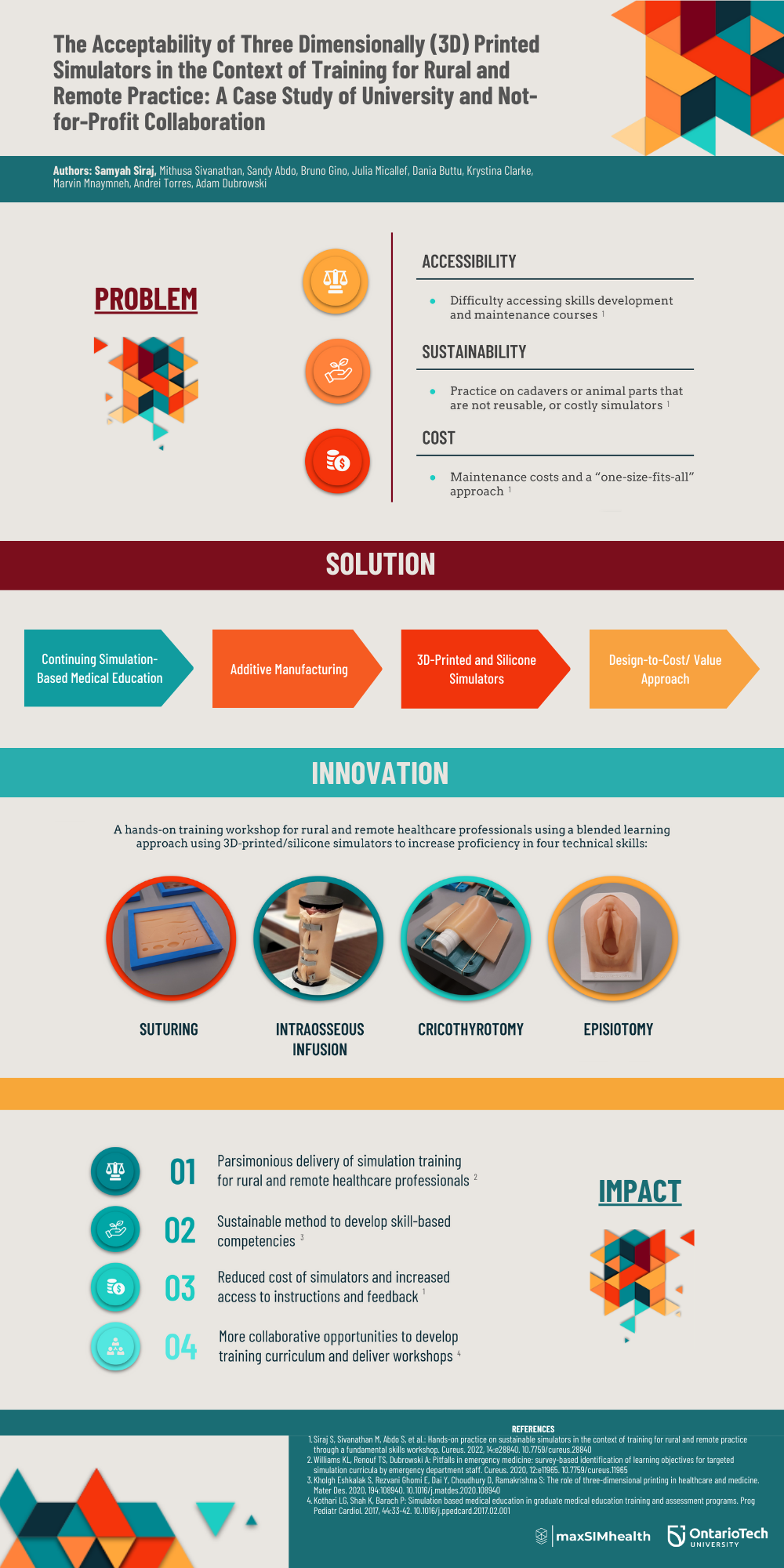Abstract
Rationale: Physicians practicing in rural communities are always in search of training on high acuity, low occurrence procedures. Simulation-based education (SBE) is a feasible, sustainable method to allow physicians to practice and develop competence on clinical skills, however simulation can be expensive and therefore not always feasible in rural and remote areas. Using additive manufacturing to develop and fabricate simulators for rural and remote physicians may provide a good alternative, but it requires digital design and manufacturing expertise, as well as infrastructure that is not easily accessible to rural physicians.
Learning Objective: The objective of this demonstration showcase is to present a collaboration between a university-based research and innovation laboratory and a not-for-profit society, the Society of Rural Physicians of Canada (SRPC), to develop and fabricate four simulators to be used during the Annual Rural and Remote Medicine Course meeting.
Description of the innovation: A fundamental skills curriculum was prepared for a 3-hour long workshop. The curriculum provided hands-on training practice using a blended learning approach on 3D-printed/silicone simulators to increase proficiency in four technical skills: suturing, cricothyrotomy, episiotomy, and intraosseous infusion. The simulators were developed using a design-to-cost approach over the span of four months with multiple meetings between the design and clinical teams to make them as inexpensive as possible, while maintaining relative realism.
Summary of usage/evaluation: The delivery of this curriculum provides medical students and practicing physicians the opportunity to gain knowledge and training on necessary skills by practicing on 3D-printed simulators, which is critical to develop psychomotor skills for the workplace. The post-course evaluations demonstrated high satisfaction with the course (5/5). We have gathered feedback from the instructors and event organizers about redesign of the simulators for future workshops. To formalize the collaboration for the upcoming years, the research and innovation laboratory has been asked to join the planning committee for the 2023 year, and to support the SRPC with custom designs to optimize the costs and logistics of running the course in the future.






